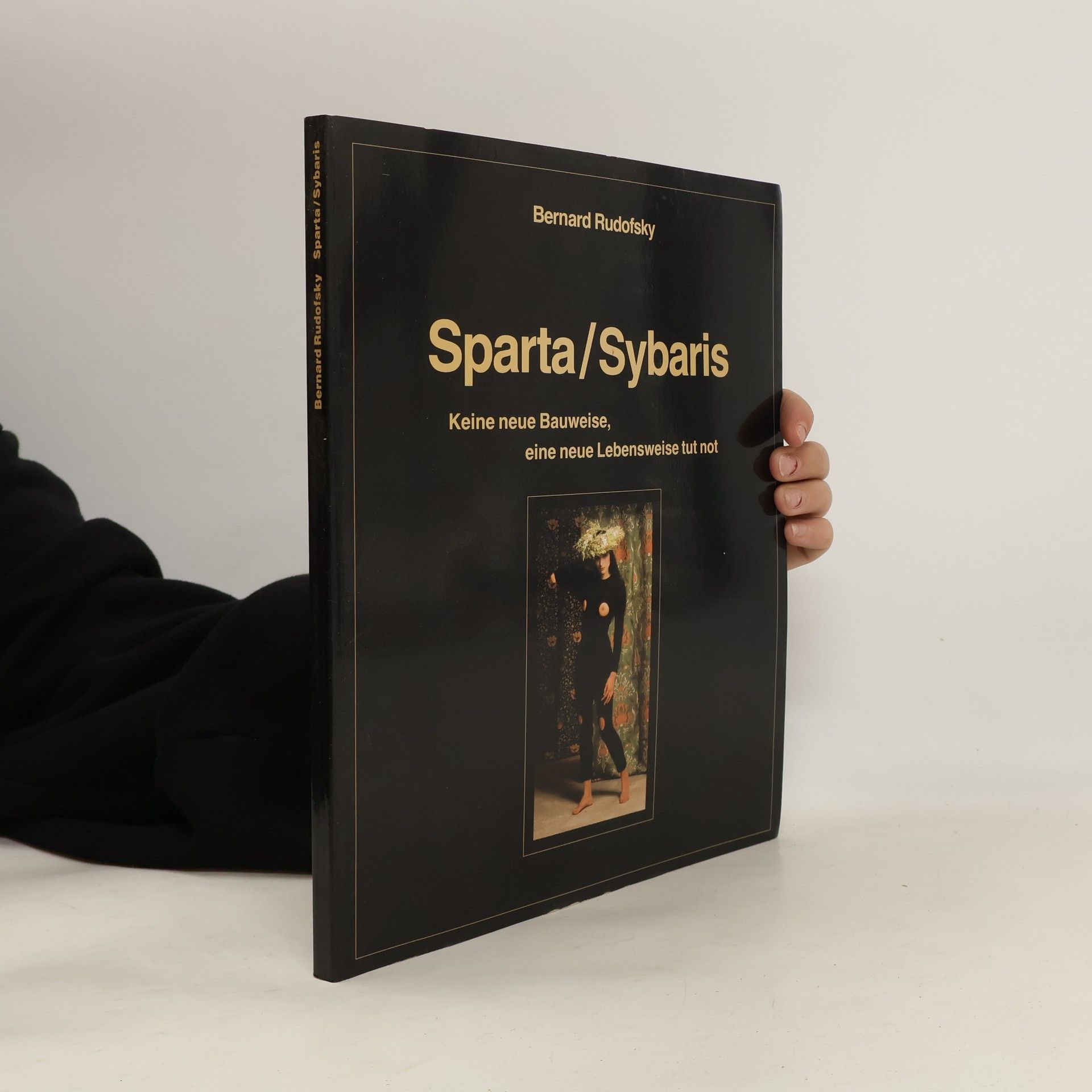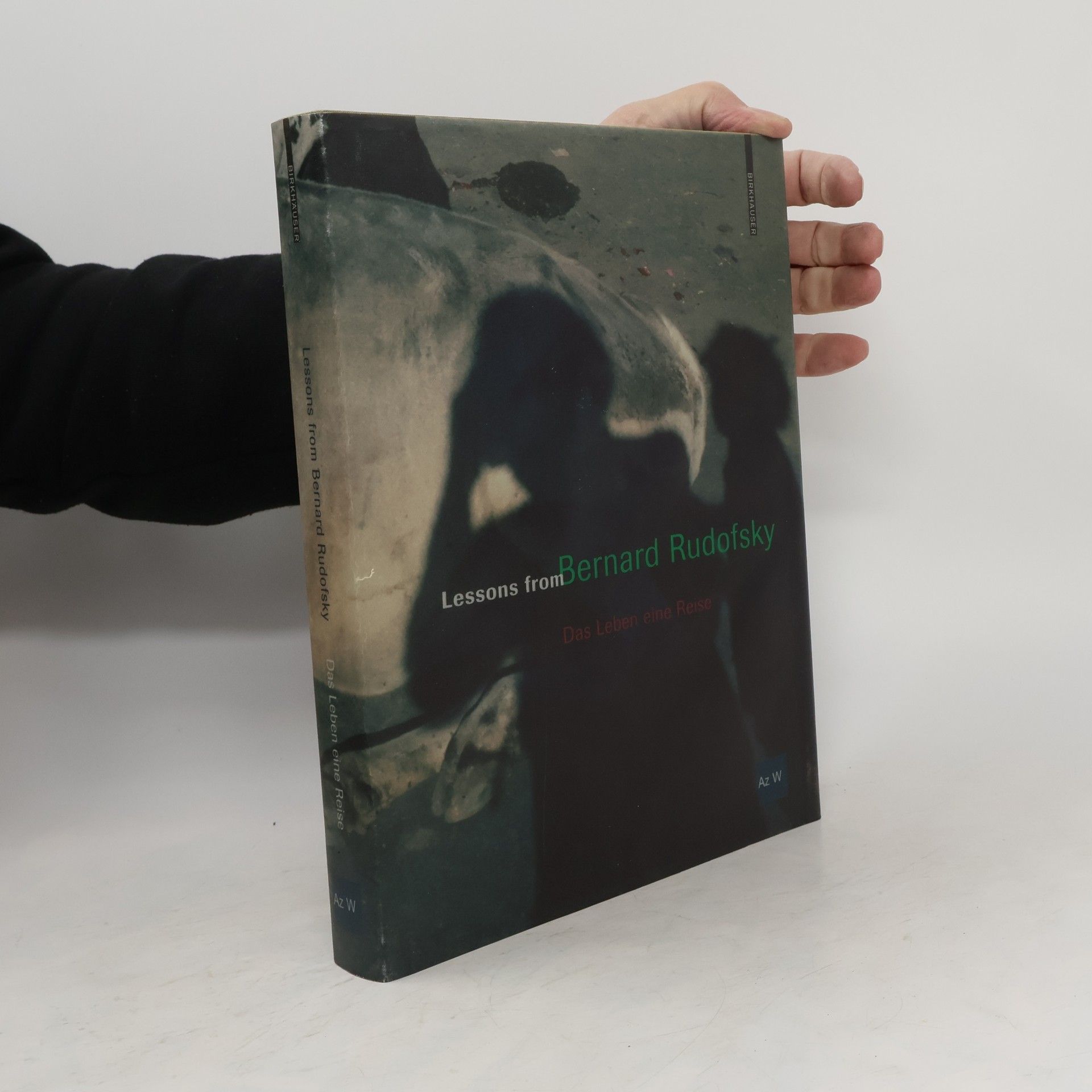What we need is not a new way of building but a new way of living—so the subtitle of one of Rudofsky’s last works. Setting out from the assumption that the design of every single room in a house is based on a physical function: one place to lie the body down to rest, another to take in food, a third to step into a tub to bath, Bernard Rudofsky (1905-88) believed architecture served to stimulate the senses and refine everyday culture. His conception of architecture and design is more topical today than ever. Internationally renowned in his day for the exhibitions he created for MoMA in the 1940s and 1950s, today he is remembered above all for his sharp-tongued, witty writings, which still speak to a broad audience. „Lessons from Bernard Rudofsky“ is more than a collection of essays by experts and introduction to the complex concept of architecture and living of a cosmopolitan and unconventional thinker; the rich visual material conveys his philosophy: „I believe that sensory pleasure should take precedence over intellectual pleasure in art and architecture.“
Bernard Rudofsky Libri
Bernard Rudofsky fu un architetto e designer la cui intera opera fu plasmata da un fascino duraturo per il corpo e l'uso dei nostri sensi. Il suo lavoro, spesso provocatorio, esplorò la profonda connessione tra la forma umana e il suo ambiente. Rudofsky ottenne riconoscimento per le sue influenti mostre e i relativi cataloghi, che sfidarono le nozioni convenzionali di architettura, moda e stile di vita. Il suo approccio innovativo al design e al pensiero critico lasciò un segno indelebile in varie discipline.






In this book, Bernard Rudofsky steps outside the narrowly defined discipline that has governed our sense of architectural history and discusses the art of building as a universal phenomenon. He introduces the reader to communal architecture--architecture produced not by specialists but by the spontaneous and continuing activity of a whole people with a common heritage, acting within a community experience. A prehistoric theater district for a hundred thousand spectators on the American continent and underground towns and villages (complete with schools, offices, and factories) inhabited by millions of people are among the unexpected phenomena he brings to light. The beauty of "primitive" architecture has often been dismissed as accidental, but today we recognize in it an art form that has resulted from human intelligence applied to uniquely human modes of life. Indeed, Rudofsky sees the philosophy and practical knowledge of the untutored builders as untapped sources of inspiration for industrial man trapped in his chaotic cities.
The Unfashionable Human Body
- 281pagine
- 10 ore di lettura
Architektura bez architektů - Krátký úvod k architektuře bez rodokmenu
- 156pagine
- 6 ore di lettura
Ve svých rukou držíte první české vydání významné a ve světovém kontextu známé knihy Bernarda Rudofského, vydané v roce 1964, která je zároveň vůbec první publikací Rudofského v češtině. Zároveň jde o zahájení aktivit Kabinetu architektury, jež chtějí přiblížit myšlenky a životní příběh Bernarda Rudofského české veřejnosti.
Lessons from Bernard Rudofsky: das Leben - eine Reise
- 296pagine
- 11 ore di lettura
Entwerfen für den Alltag - Ideen gegen die Fadheit in Design und Architektur.

